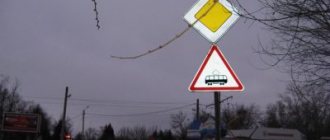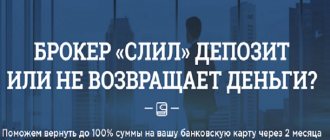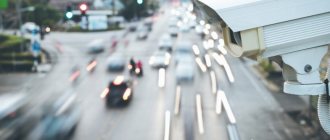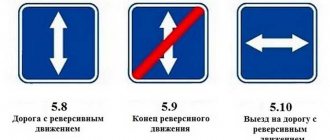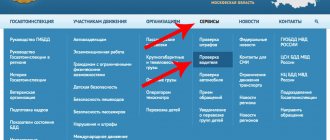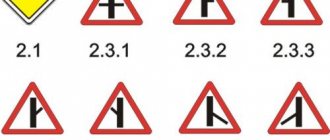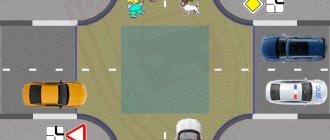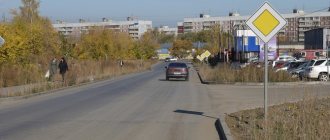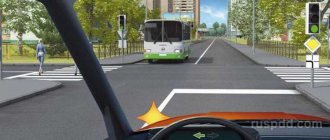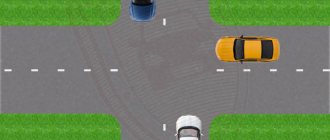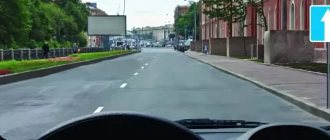Concept of sound signal
In regulations, special signals are given the following definition - flashing beacons , can be blue-red or only blue, and can be equipped with a device for transmitting sound.
A special signal is a combination of light and sound that foretells the approach of a police car, ambulance, or fire brigade. Equipment equipped with such a signal has a special status. If special conditions are met, all other vehicles are required to give way to them. The GOST provision, which contains a description of the concept, applies to passenger cars, as well as motorcycles and buses belonging to operational services.
According to the rules, a device for delivering special sound signals is a device capable of producing sounds of a certain spectral composition. It does not apply to the structural elements of the vehicle - the special one differs from the usual sound signal in the spectrum of sounds (clause 11). Installation is carried out according to a permit issued by the traffic police.
Flashing beacons - “flashing lights” are used to provide light signals and must have colors established by GOST , a certain duration of illumination and frequency of blinking (clause 12 of article 3 of GOST). The light device does not belong to the elements that are included in the design of the vehicle. For installation you must obtain a special permit.
Who is allowed to drive with flashing lights and sirens?
As defined in clause 3.1 of the Traffic Rules, approved by Government Decree No. 1090 of October 23, 1993 (hereinafter referred to as the Traffic Regulations), drivers who are performing an urgent official task can use a blue beacon and siren. At the same time, they have the right not to comply with many traffic rules, except for traffic controller signals, provided that they ensure traffic safety.
The right to use special signals, according to the list approved by Presidential Decree No. 635 of May 19, 2012, is predominantly available to vehicles registered with the highest state and municipal bodies, the military, the federals, intelligence officers, and tax authorities. Moreover, the number of such cars is strictly limited.
According to sub. “b” clause 3 of Decree No. 635, special signals are installed on emergency vehicles (firefighters, police, investigators, doctors, rescuers and the military). However, their cars, in addition to having special signals, must have special colorographic images on their surface.
Such restrictions mean that ordinary citizens who equipped their cars with special signals and used them without having any rights to do so cannot avoid fines for flashing lights or sirens.
Types of special signals
The following types of special signals are used on the territory of the Russian Federation:
- Blue flashing light. May be accompanied by an audible signal.
- Blue and red flashing lights. May be accompanied by an audible signal.
- Yellow or orange flashing light.
- White-lunar flashing light. May be accompanied by an audible signal.
Such a list is determined by the third section of the Traffic Rules. The same section establishes the rules for the use of light and sound special signals.
The first type - blue colors are used, or a combination of blue and red
Ambulances, fire departments, police, and other government special agencies are usually designated.
The light signal is accompanied by a specific sound. In addition, the car must have special color schemes and appropriate inscriptions.
If the established requirements are met - the flashing lights and siren are turned on simultaneously, employees of the institution can take advantage of their advantage. But the main rule must be observed - to ensure traffic safety on the roads.
Traffic priority is granted subject to certain conditions:
- drivers of other cars are obliged to give way to this vehicle, even if the driver of the latter is not driving according to the rules;
- You cannot overtake a car with a special beacon, but the driver of a special vehicle must make sure that they give way before using their priority;
- When the light beacon and sound signal are turned on, vehicles can move ahead or behind an organized convoy to escort other vehicles. Regular vehicles are prohibited from adjacent to or crossing the moving column;
- When approaching a stopped vehicle with a special sign of this type, the driver must reduce the speed to a minimum and, if necessary, make a full stop.
Special signals of the second type
Special signals of the second type are yellow (orange) flashing lights that serve to attract the attention of traffic participants. There is no sound when using them.
The yellow or orange flashing light must be turned on:
- on vehicles performing work on the construction, repair or maintenance of roads;
- on tow trucks when loading and transporting faulty, damaged and improperly parked vehicles;
- on vehicles transporting and accompanying large, heavy cargo and hazardous substances;
- on vehicles accompanying organized groups of cyclists during training activities on public roads.
Drivers of vehicles with a yellow or orange flashing light on may deviate from the requirements of road signs (except for priority signs and some prohibition signs), road markings, as well as paragraphs of the Rules regarding the location of vehicles on the roadway.
At the same time, the safety of other road users must be ensured.
A yellow or orange flashing light does not provide an advantage in traffic and serves to warn other road users of danger.
Special signals of the third type
Special signals of the third type are installed on collection vehicles transporting money and valuable cargo. They are lunar-white flashing beacons combined with a special sound signal.
Such special signals have nothing to do with road traffic - they are supposed to be turned on only in the event of an attack on collectors.
A white-lunar flashing light does not provide an advantage in traffic and serves to attract the attention of police officers and other persons.
It is important to know!
Special signals must be installed on vehicles legally, otherwise they are subject to confiscation, and the driver and owner of the vehicle will face serious administrative punishment in the form of a large fine and deprivation of a driver’s license for up to 2 years.
Cars with blue flashing lights
According to paragraph 3.1 of the Rules, for emergency vehicles and vehicles transporting the leadership of the state and its subjects, violations of certain traffic regulations are permissible . But this is possible only when performing official activities that require urgency and only when the flashing light and siren are turned on. Ignored rules include:
- Traffic signals. However, the traffic controller's instructions are mandatory even for cars with a blue flashing light on.
- Speed mode;
- Regulations for road signs and markings;
- Rules for maneuvering, overtaking and positioning of vehicles;
- Rules for driving through intersections, zebra crossings, railway crossings, tram tracks and other special sections of the roadway.
Also, paragraph 3.1 extends these standards to transport in a convoy, which is accompanied by vehicles with a working blue “flashing light” and siren . The rules require accompanying vehicles to turn on their low beams.
The behavior of other drivers in this case is regulated by paragraph 3.2 of the traffic rules. According to it, when vehicles appear with special signals on, others must give way to them. This means that you will be required to either change lanes into the adjacent lane, or stop on the side of the road and clear the way. You also need to give way to vehicles in a convoy, which is accompanied by vehicles with special signals.
Overtaking cars with a working flashing light and siren is prohibited, but only if these cars have color schemes in accordance with GOST R 50574-2002. It is also forbidden to build into a column accompanied by special vehicles.
Separately, it is worth highlighting in paragraph 3.2 of the traffic rules the words that both the flashing light and the sound signal must be turned on. Formally, you can overtake and not give way to special vehicles with a non-working siren. But in practice, it is better not to create a dangerous situation and give the ambulance or fire truck the way. Moreover, drivers of vehicles with a blue flashing light often receive instructions that it is forbidden to turn on sirens after 23:00, this is worth taking into account.
If, while driving on the road, you see a car with a blue flashing light, slow down to stop at the first request of emergency workers.
Misuse of Signals
According to traffic regulations, a car with a special signal must have permission to install and use warning devices of this type. If there is none, then turning on the flashing light and sound signal is regarded as an illegal act and is punishable by law.
Spontaneous installation of a special signal on transport entails a fine of 5,000 rubles, followed by confiscation of the subject of the offense. This is described in the Code of Administrative Offenses of the Russian Federation, Part 2, Art. 12.4.
If suddenly the offender pays the fine within twenty days from the date of the decision, then the amount of the fine is halved, i.e. he will pay not 5,000 rubles, but half the amount - 2,500 rubles. In other cases, the fine is paid in full (Administrative Code of the Russian Federation, Part 1, Article 32.2).
What is prohibited from using special signals and what do traffic regulations say?
In fact, the Rules prohibit their installation. The basic provisions for the admission of vehicles prescribe the following:
11. Operation is prohibited:
- vehicles equipped without appropriate permission ... with flashing lights and (or) special sound signals.
Please note that only certain services have permission to use special signals. Their list was approved by Decree No. 635 of the President of Russia. This includes both operational services, including police, ambulance, Ministry of Emergency Situations and others, as well as the security of high-ranking officials and even the Academy of Sciences.
But not every device is a special signal! It is necessary to distinguish between the approved color and operating mode of beacons or “quacks” and simply lighting devices in strobe mode, loudspeakers, and the like. Although the use of both types of such devices while driving a car entails deprivation of rights, the terms of such deprivation are different, and additional penalties are also different.
We will not give here a complete list of all possible special signals, but it is obvious that red, blue, yellow colors in the form of beacons, as well as other colors that you see on the road on specially equipped cars are special signals.
Now is the time to talk about possible sanctions. Let's first look at the minimum threshold of penalties for this - fines, and then list what people are deprived of their rights for.
Which article regulates the fine for the unauthorized installation of special signals: taxi lights, reflective stripes of special services, taxi checkers, sound signals?
Such an offense is regulated by Article 12.4 of the Code of Administrative Offenses of the Russian Federation “Violation of the rules for installing devices on a vehicle for giving special light or sound signals, or illegal application of special color schemes of emergency service vehicles, color scheme of a passenger taxi, or illegal installation of an identification lamp of a passenger taxi.” This article in part 1 prescribes a fine for installing lighting devices on a car in the wrong light or in the wrong place. Let's say if you installed xenon, which should not be on the car. But in parts 2 and 3 of the same article 12.4 of the Code of Administrative Offenses of the Russian Federation, the options that interest us are spelled out, namely fines for the unauthorized installation of special signals: taxi lights, reflective stripes of special services, taxi checkers, sound signals. It must be said that Article 12.4 of the Code of Administrative Offenses of the Russian Federation does not provide for liability for driving a car with such signals. In fact, this is already the second action, that is, another offense. Controlling the machine with special signals, etc. is already qualified as a violation under Article 12.5 of the Code of Administrative Offenses of the Russian Federation. Now let's figure it all out according to the chronology given here of the mention of each article of the Code of Administrative Offenses of the Russian Federation.
What are the fines for installing special signals on cars?
Among the forms of relevant traffic violations in 2021, 3 main groups can be divided:
- installation of special signals for emergency services,
- driving a vehicle equipped with flashing lights or special sound “quacks”,
- use of these signals – both while moving and when the vehicle is stationary.
For the most part, fines are provided only for installing special signals on a car; other violations entail deprivation of rights.
For installation of prohibited lighting devices – 3,000 rubles + confiscation of the device
Part 1 of Article 12.4 provides for a substantial fine for installing one of these types of lighting devices:
- with red lights (or red reflectors) at the front of the car,
- if the color of the lights and operating mode do not comply with the Basic Provisions of the Traffic Regulations.
If everything is very clear with the red lights, then the second point requires clarification. The permitted color of lights according to the 2021 Russian Rules can be:
- white,
- orange,
- yellow.
The operating mode (according to the Technical Regulations) is constant or flashing.
That is, a fine of 3,000 rubles is provided if you install lighting devices that will violate both the color and the established operating mode. Please note that we are talking specifically about installation, and managing them entails deprivation of rights (more on this below).
Fine for driving a car with special signals (taxi lights, sound and light signals of special services) and reflective stripes and taxi symbols on the sides of the car
Let's go in order. Article 12.5 of the Code of Administrative Offenses of the Russian Federation describes cases of driving a vehicle with special signals, as well as cases of using such special signals, and driving a vehicle with illegal color schemes (stripes, checkers) on the sides of the car. This is what is written in the article starting from part 4.
| 4. Driving a vehicle on which devices for sending special light or sound signals (with the exception of security alarms) are installed without appropriate permission - entails deprivation of the right to drive vehicles for a period of one to one and a half years with confiscation of these devices. 4.1. Driving a vehicle on which an identification light of a passenger taxi or an identification sign “Disabled” is illegally installed will entail the imposition of an administrative fine on the driver in the amount of 5,000 rubles with confiscation of the subject of the administrative offense. 5. The use of devices for giving special light or sound signals (with the exception of security alarms) installed without the appropriate permission while driving a vehicle - entails deprivation of the right to drive vehicles for a period of one and a half to two years with confiscation of these devices. 6. Driving a vehicle on the outer surfaces of which special color schemes of emergency services vehicles are illegally applied - entails deprivation of the right to drive vehicles for a period of one to one and a half years. 7. Driving a vehicle on which the color scheme of a passenger taxi is illegally applied will entail the imposition of an administrative fine on the driver in the amount of 5,000 rubles. |
Let's summarize. If the matter concerns driving a vehicle with illegally applied taxi stripes (checkered), or with a taxi lamp, then in this case a fine of 5,000 rubles is threatened. If the driver drove a car with illegally installed signals, used them while driving, or drove a car on which special service stripes were illegally applied, then this is a deprivation of a driver’s license for up to 1.5 years, with confiscation of all illegal special equipment.
What is the fine for flashing lights on the roof or hood?
For the illegal installation of special signals (beacon and/or siren), the guilty person faces administrative liability - fines and deprivation of rights. In this case, fines are imposed on guilty individuals, officials and legal entities.
Thus, for the unlawful installation of special signals and the application of color cartographic diagrams characteristic of emergency services, the owner of the car or the official responsible for its operation may be brought to administrative liability. For example:
- For installing red lights, lighting devices or flashing lights on the hood, Part 1 of Art. 12.4 of the Code of Administrative Offenses of Russia provides for the confiscation of such devices and a fine in the amount of:
- for individuals - 3000 rubles;
- officials - 15,000–20,000 rubles;
- legal entities - 400,000–500,000 rubles.
- Installation of special signals on cars in accordance with Part 2 of Art. 12.4 of the Code of Administrative Offenses of Russia, a fine is imposed for a siren, beacon or identification lamp “Taxi” with their subsequent confiscation in the amount of:
- for individuals - 5000 rubles;
- officials - 20,000 rubles;
- legal entities - 500,000 rubles.
- Illegal application of color identification marks of emergency services to cars, in accordance with Part 3 of Art. 12.4 of the Code of Administrative Offenses of Russia, a fine is expected in the amount of:
- for individuals - 5000 rubles;
- officials - 20,000 rubles;
- legal entities - 500,000 rubles.
What are the benefits of yellow flashing lights?
I would like to point out right away that turning on the yellow flashing light itself does not provide any advantage.
For example, if cyclists are accompanied by a car with a yellow flashing light, then its driver must comply with the requirements of the traffic rules.
However, there are several situations in which the driver of a car with an orange beacon can deviate from the requirements of the rules with impunity:
1. Carrying out work on the construction, repair or maintenance of roads, evacuation of cars.
2. Movement of large vehicles, escort of large or heavy vehicles.
Let's consider each of the listed cases separately.
During road works and evacuation
Drivers of vehicles with a yellow or orange flashing light on when performing work on the construction, repair or maintenance of roads, loading damaged, faulty and moving vehicles may deviate from the requirements of road signs (except for signs 2.2, 2.4 - 2.6, 3.11 - 3.14, 3.17 .2, 3.20) and road markings, as well as paragraphs 9.4 - 9.8 and 16.1 of these Rules, provided that road safety is ensured.
When performing work on the construction, repair or maintenance of roads, or evacuation of vehicles, the requirements of road markings and road signs may be violated, except for :
Also, drivers of cars with yellow lights may violate the requirements of the following points of the rules:
9.4. Outside populated areas, as well as in populated areas on roads marked with signs 5.1 or 5.3 or where driving at a speed of more than 80 km/h is permitted, vehicle drivers must drive them as close as possible to the right edge of the roadway. It is prohibited to occupy the left lanes when the right lanes are free.
In populated areas, taking into account the requirements of this paragraph and paragraphs 9.5, 16.1 and 24.2 of the Rules, vehicle drivers can use the lane that is most convenient for them. In heavy traffic, when all lanes are occupied, changing lanes is only allowed to turn left or right, make a U-turn, stop, or avoid an obstacle.
What are the terms of deprivation of rights for driving and using special signals?
As you probably already understood, deprivation of the right to drive entails driving a car with installed beacons, “quacks” and other prohibited light and sound devices, as well as their use and activation.
Deprivation of license for driving with special signals
There is a fine for installing special signals, but for driving with installed special signals there is a more serious charge, namely deprivation of a driver’s license.
In accordance with Part 4, Art. 12.5 Code of Administrative Offenses of the Russian Federation » Driving a vehicle on which, without appropriate permission, devices are installed to provide special light or sound signals (with the exception of a security alarm)
- entails deprivation of the right to drive vehicles for a period of one to one and a half years with confiscation of the specified devices.
For driving a car with a flashing light or a “quack” – imprisonment for 1-1.5 years + confiscation
But if you are driving a car with special signals installed but turned off - sound or light, then in 2021 you will be deprived of the right to drive under Part 4 of Article 12.5, in addition to a fine under Part 2 of Article 12.4 of the Code of Administrative Offenses.
For using a beacon or “quack” – imprisonment for 1.5-2 years + confiscation
The most severe punishment with long-term deprivation of rights, as for driving a car while intoxicated, awaits you if you drive a car and use special signals according to Part 5 of Article 12.5.
Please note that managing or using special signals and installing them are different actions and violations. That is, if you use special signals while driving, you will not only be deprived of your license for 1.5-2 years, but will also be fined for installing them. Likewise, if you drive with special signals turned off or with prohibited lighting devices.
For serving while driving
Using devices to signal using light or sound while driving a car, you risk getting a fine if you do not have special permission. If it is not registered with the traffic police, the responsible person may be deprived of the right to drive a vehicle for a period of 1.5-2 years, while devices that violate the rules are subject to confiscation. Responsibility is administrative; for imposing punishment, Article 12.5, Part 5 of the Code of Administrative Offenses is applied.
Reference . If the fine is paid within 20 days from the date of the decision, its size will be halved. In situations where the execution of a court order is delayed or is carried out in installments, the fine is paid in full.
Penalties for using orange flashing lights
The use of orange flashing lights in itself is not a violation of the rules, so there is no .
However, if the driver of a car with a flashing light on (not engaged in road maintenance, evacuation, transportation of heavy and large cargo) begins to violate traffic rules, then he will be punished for violating the relevant points.
For example, for driving onto tram tracks in the opposite direction, a fine of 5,000 rubles or deprivation of rights for 4-6 months will be imposed.
How can the traffic police prove guilt?
A vehicle, when stopped by traffic police officers, can be checked for violations. Representatives of regulatory authorities can check whether they are installed in violation of accepted rules. The fact of illegal use of the device is very easy to establish - you just need to check the documents for the car.
Copies of documents confirming the violation can be attached to the protocol left at the place where the vehicle was detained - a vehicle registration certificate that does not have a mark authorizing special signals. At the discretion of traffic police officers, photos, videos, and witness statements may be attached.
When you don't get fined for flashing a flashing light
A fine is not imposed for a yellow/orange flashing light if it is installed on vehicles that (clause 3.4 of the traffic rules):
- load and move faulty or damaged vehicles;
- perform road (construction or repair) work;
- carry out transportation of large and dangerous goods, as well as their escort;
- accompany groups of cyclists training on public roads.
In addition, Rosposhta employees and cash collectors can equip their service vehicles with moon-white sirens and beacons. However, they can use special signals only if they are attacked.
Neither yellow/orange nor white beacons provide any advantages on the roads - they only serve as warning signals.
What cars are equipped with flashing lights?
When using a flasher in 2021, please note that the car must be registered in the Russian Federation. Clause 11 of the main provisions for the approval of a vehicle for operation:
11. Operation is prohibited:
- vehicles equipped with yellow or orange flashing lights that are not registered with the State Road Safety Inspectorate of the Ministry of Internal Affairs of the Russian Federation or other bodies determined by the Government of the Russian Federation (except for large vehicles and vehicles transporting explosive, flammable, radioactive substances and highly dangerous toxic substances).
It is prohibited to install flashing lights on cars without license plates (unregistered) and cars registered in other countries.
This exception does not apply to large vehicles or vehicles carrying explosive, flammable, radioactive or highly hazardous toxic substances.
